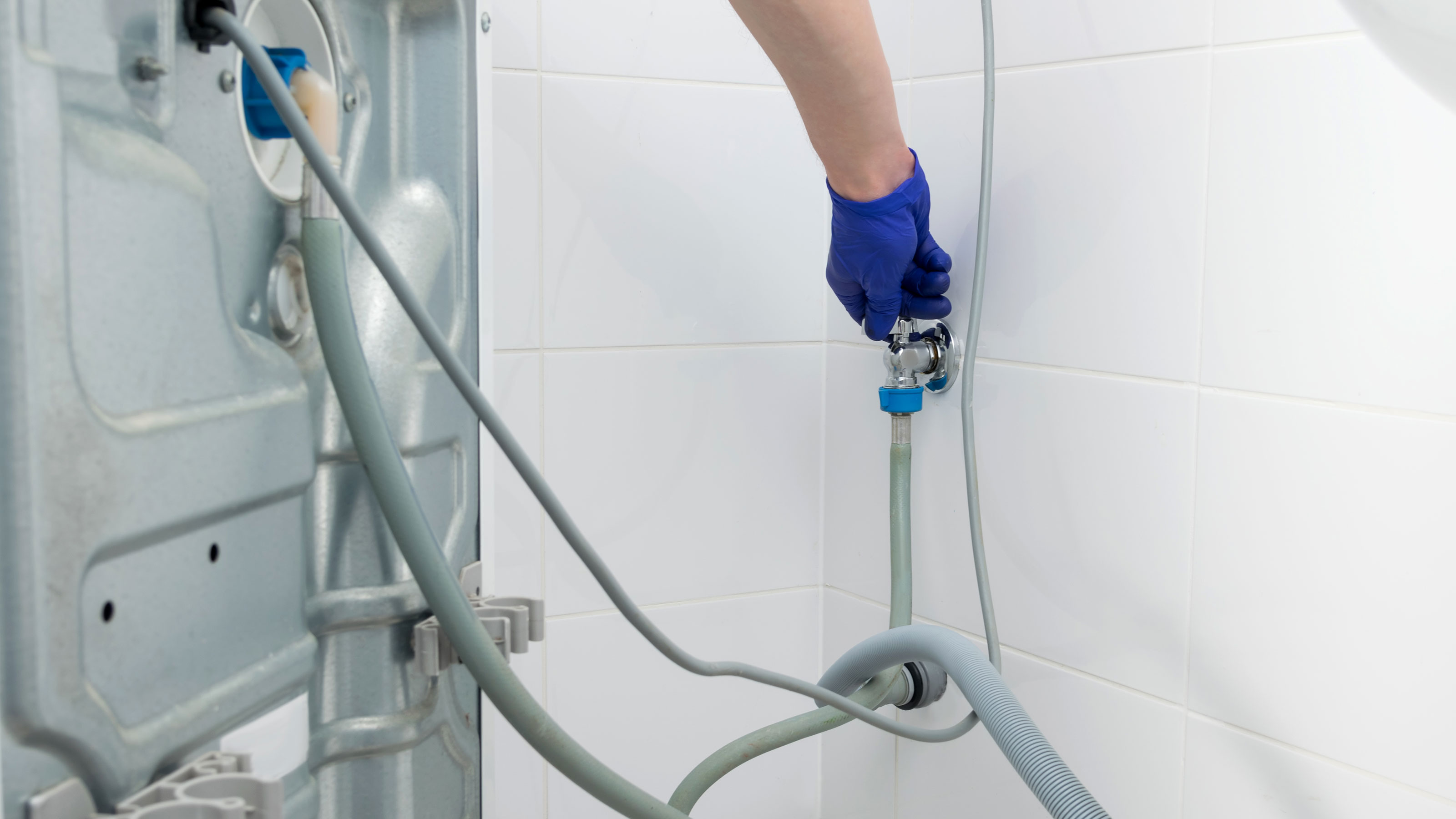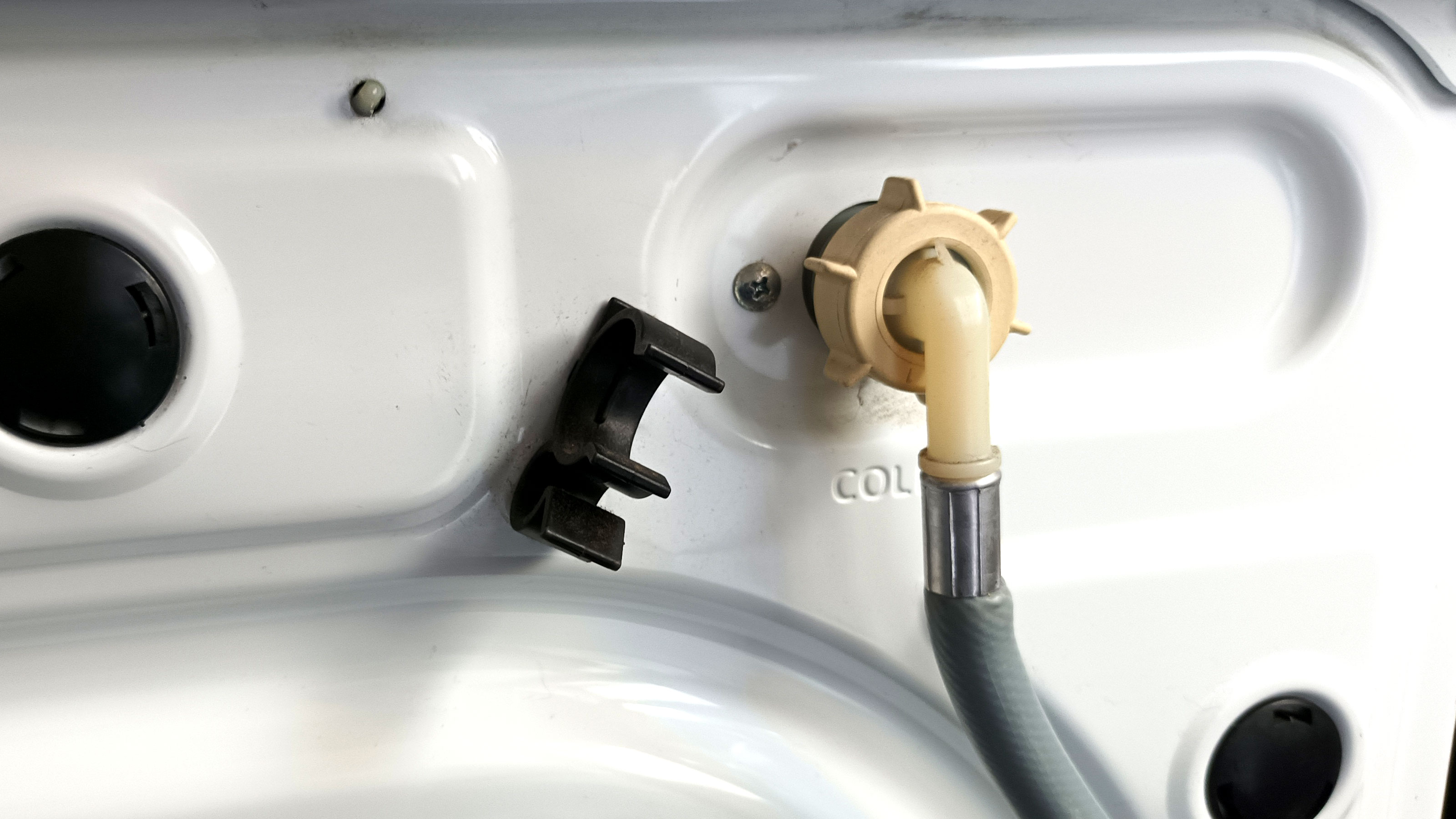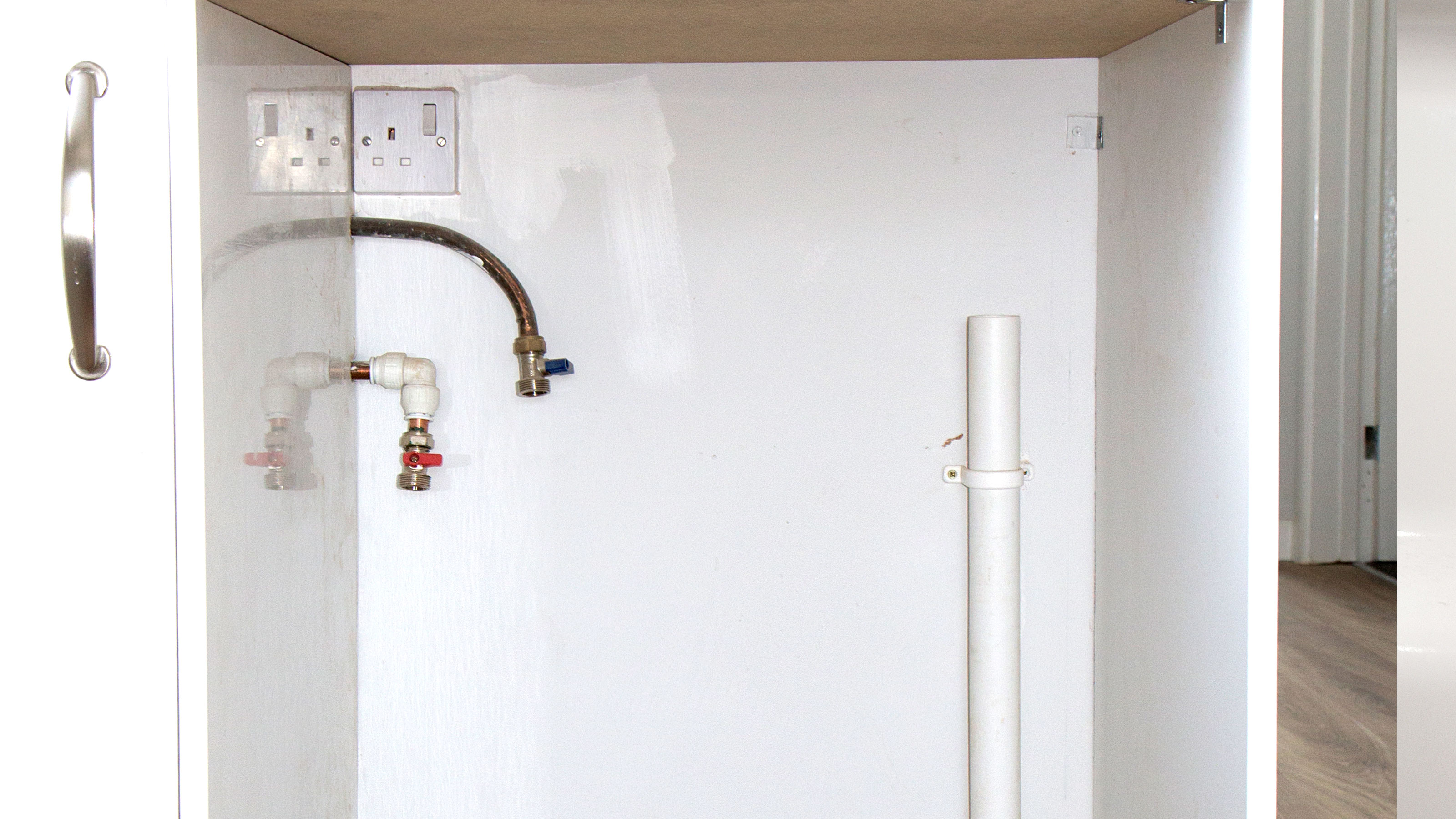Plumbing in a washing machine in four quick and easy steps
How easy is plumbing in a washing machine? We show you how to connect the water supply, drain pipe and power to start using your washing machine right away

Plumbing in a washing machine is a task that can be tackled by most DIYers. Even if you have never had the pleasure of pursuing such a job, our step-by-step will guide you through what you need to know.
This is as long as you are plumbing in a washing machine in the same place as your old one. If you are looking to relocate your washing machine you will need to make sure that you have the right plumbing in place.
If you have an integrated dishwasher already plumbed in, think about putting the washing machine nearby as this will have similar plumbing. But once you have everything in place plumbing in your washing machine will be as easy as it was when in the old position.
Plumbing in a washing machine: How to get your new machine connected and ready to use
Installing a new washing machine isn’t difficult if all the necessary plumbing is in place. If placed in the same position as the old washing machine this won’t be a problem.
1. Remove packaging
Move your new washing into the room where it is going to be plumbed in and remove all the packaging with a sharp knife or scissors. Read the manufacturer's instructions, and be careful not to scratch the washing machine.
New washing machines will have what are known as carriage bolts to keep the drum in place when on the move. Remove these as per the manufacturer's instructions.
2. Connect the water supply
Your new washing machine will come supplied with the necessary pipes to get it working. Attach the water pipe to the cold water supply on the back of the washing machine. Tighten by hand and then use a pair of pliers to tighten a little more. Now attach the other end to the cold water supply and tighten. Turn on the water supply to ensure there’s no leaks.
3. Add drain pipe and plug in
A drain hose or pipe comes from the back of the washing machine; typically this will have a U-shaped plastic sleeve. Attach the drain pipe and then hang the pipe in the standpipe where the waste water will go. Now plug in the washing machine to the nearest power outlet.
4. Move, level and wash
Now move the washing machine into its final position. Get a spirit level and use the front adjustable feet to make sure it is level. Now switch on and run a short wash cycle while the washing machine is empty to get rid of any residue in the pipes.

How much does it cost to install plumbing for a washing machine?
This depends very much on the location of where the washing machine is going to be plumbed in. Most homes will have pipework already in place, but if you want to plumb in the washing elsewhere you will need to extend the existing pipework or introduce new pipework.
The cost will depend on how much work needs to be done and complexity of the job. Plumbers charge around £50 an hour and a job could take anywhere from a couple of hours to a whole day. Expect to pay around £200 for a simple job.
To get a better idea of the exact cost for the work you need to do, contact two or three plumbers to get a quotation and choose the one that best suits your needs and budget.

How can I unblock a washing machine drain hose?
If the drain pipe/hose on your washing gets blocked or needs replacing you will need to detach it from the pump. The first thing to do is switch off the water supply to the machine. This will be as simple as turning the tap on the cold water supply in your utility room.
Have a bucket and towels ready to catch any standing water. The drain pipe/hose will be inside the washing machine so you need to remove the back panel — these are typically held in with a few screws.
Follow the drain hose and undo the clip holding the hose to the pump. Now pull the hose through any holes. To install a new one feed back through the holes and any clips and attach to the pump.
If you need to clean it, place one end of the pipe over a tap and the other end in a bucket and try to force out the blockage with hot water. If this doesn’t work, invest in a hose pipe cleaner. But you are better off buying a new hose as these are around the same price as a hose pipe cleaner and are less likely to get blocked again.
Get the Homebuilding & Renovating Newsletter
Bring your dream home to life with expert advice, how to guides and design inspiration. Sign up for our newsletter and get two free tickets to a Homebuilding & Renovating Show near you.
Steve Jenkins is a freelance content creator with over two decades of experience working in digital and print and was previously the DIY content editor for Homebuilding & Renovating.
He is a keen DIYer with over 20 years of experience in transforming and renovating the many homes he has lived in. He specialises in painting and decorating, but has a wide range of skills gleaned from working in the building trade for around 10 years and spending time at night school learning how to plaster and plumb.
He has fitted kitchens, tiled bathrooms and kitchens, laid many floors, built partition walls, plastered walls, plumbed in bathrooms, worked on loft conversions and much more. And when he's not sure how to tackle a DIY project he has a wide network of friends – including plumbers, gas engineers, tilers, carpenters, painters and decorators, electricians and builders – in the trade to call upon.

